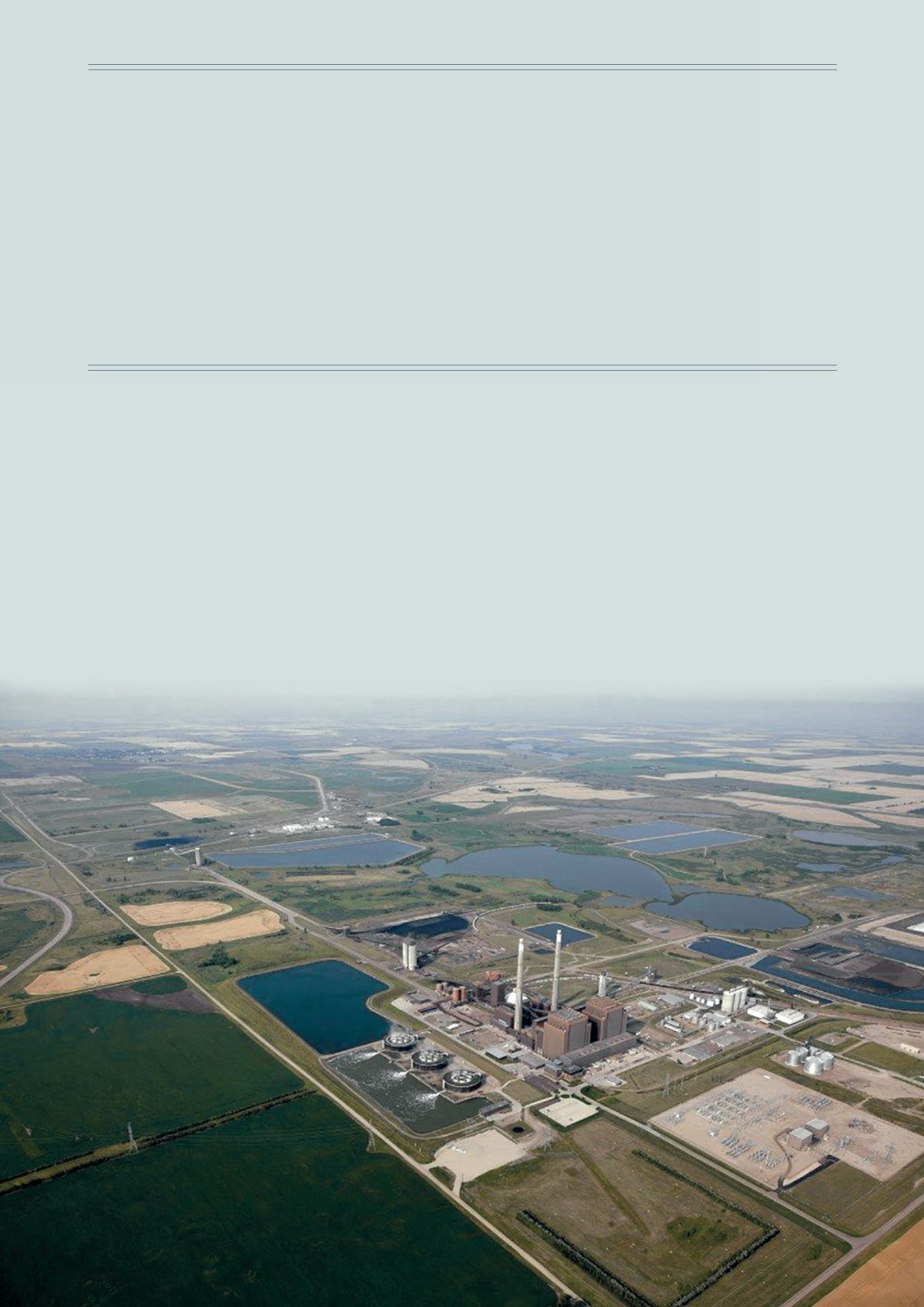
July 2015
|
World Coal
|
65
CLEAN
AND DRY
Charles Bullinger,
Great River Energy,
and Nenad Sarunac,
University of North
Carolina, US,
chart
five years of operation
of DryFining™ – a coal
drying and cleaning
system at Great River
Energy’s Coal Creek
power plant.
L
ow-rank, high-moisture
coals constitute about 50%
of the US and world coal
reserves and are almost
exclusively used for power
generation. However, when
high-moisture coals are burned in
utility boilers, a significant portion
(about 7%) of the fuel heat input is
used to evaporate and superheat fuel
moisture that leaves with the flue
gas. The high-moisture, low-heating
value (HHV or LHV) coals result in
higher fuel and flue gas flow rates,
higher auxiliary power use, higher
net unit heat rate, higher mill, coal
pipe and burner maintenance, as
well as higher emissions compared to
bituminous (hard) coals.
A reduction in coal moisture
content by thermal drying improves
the heating value of the coal, reduces
coal flow to the boiler, improves unit
efficiency, plant operation and
economics, while also reducing
emissions (NO
X
, SO
X
, particulate
matter and CO
2
). To improve unit
efficiency and reduce emissions from
the power plants firing low-rank
coals, countries with large resources


